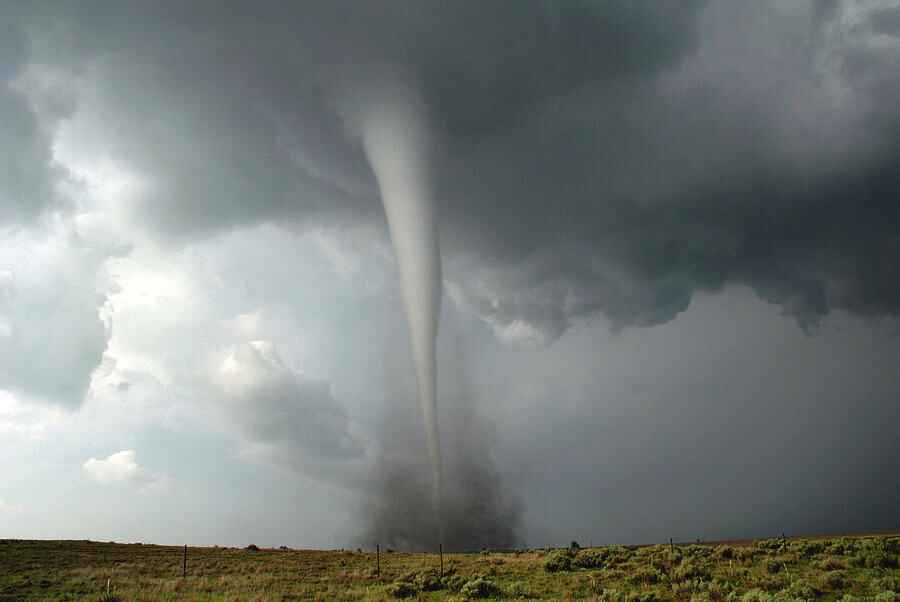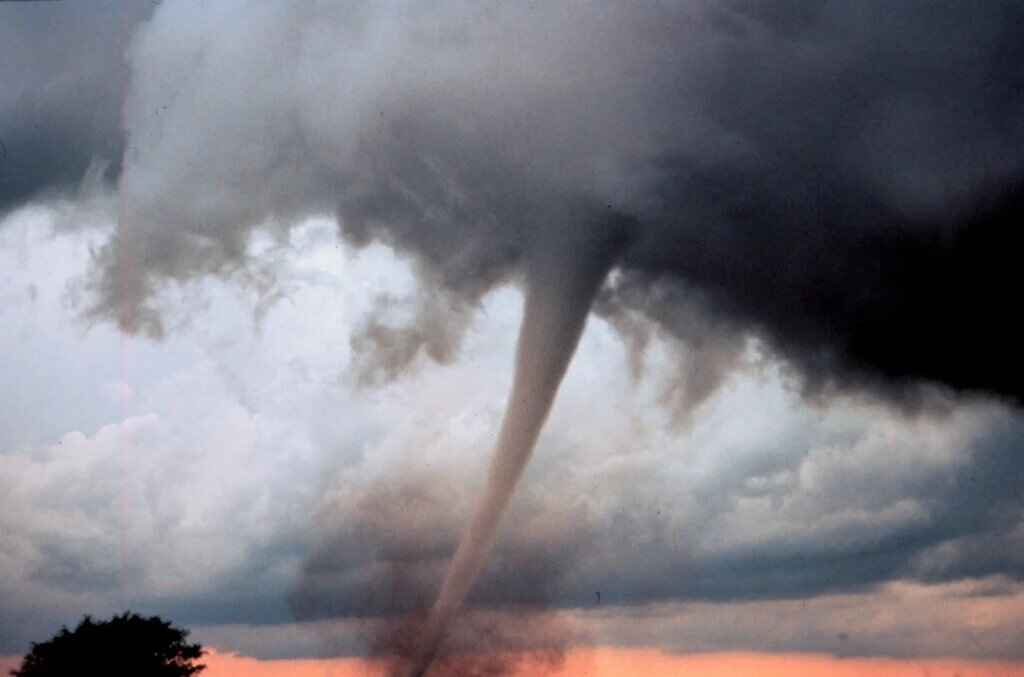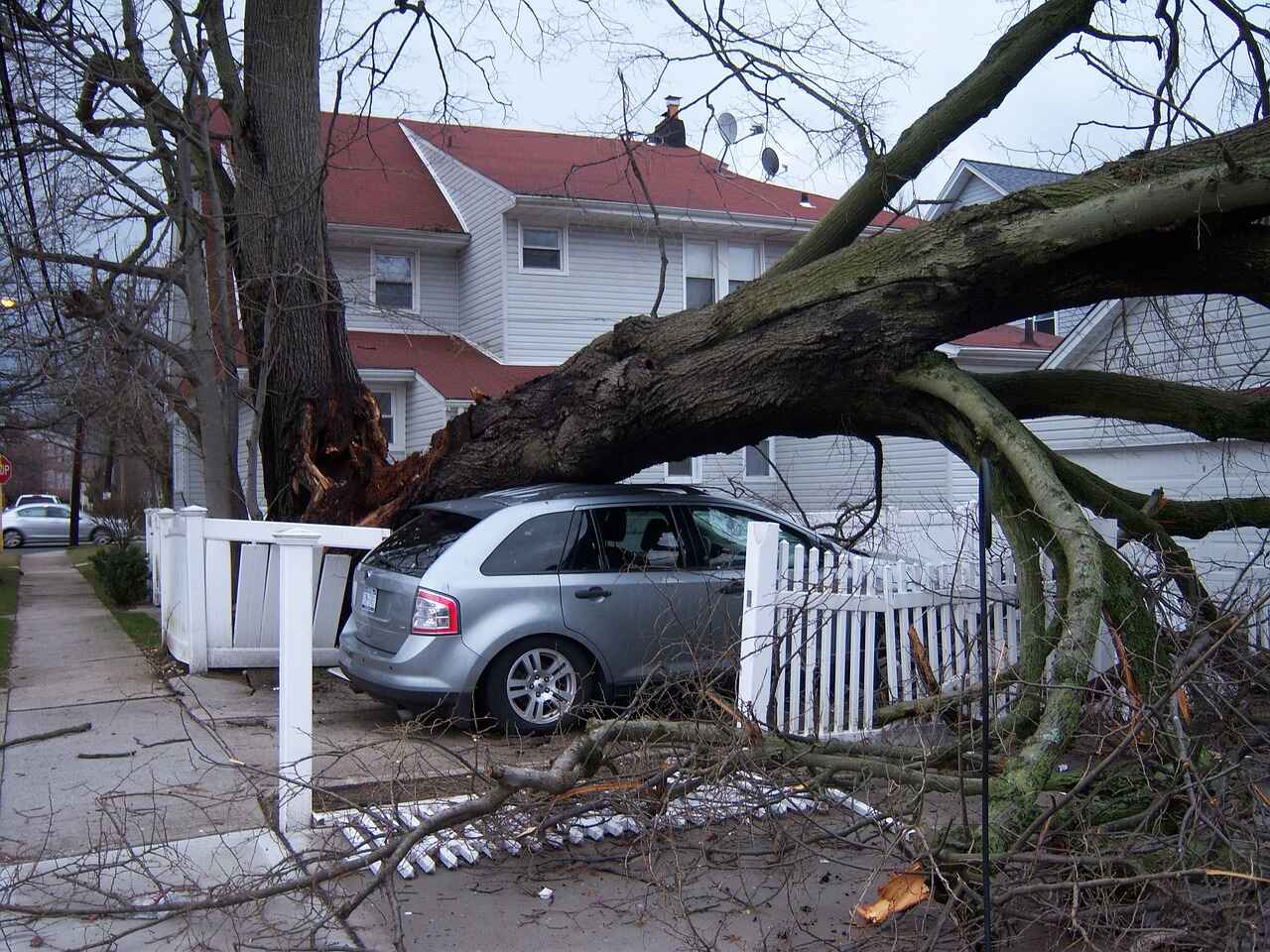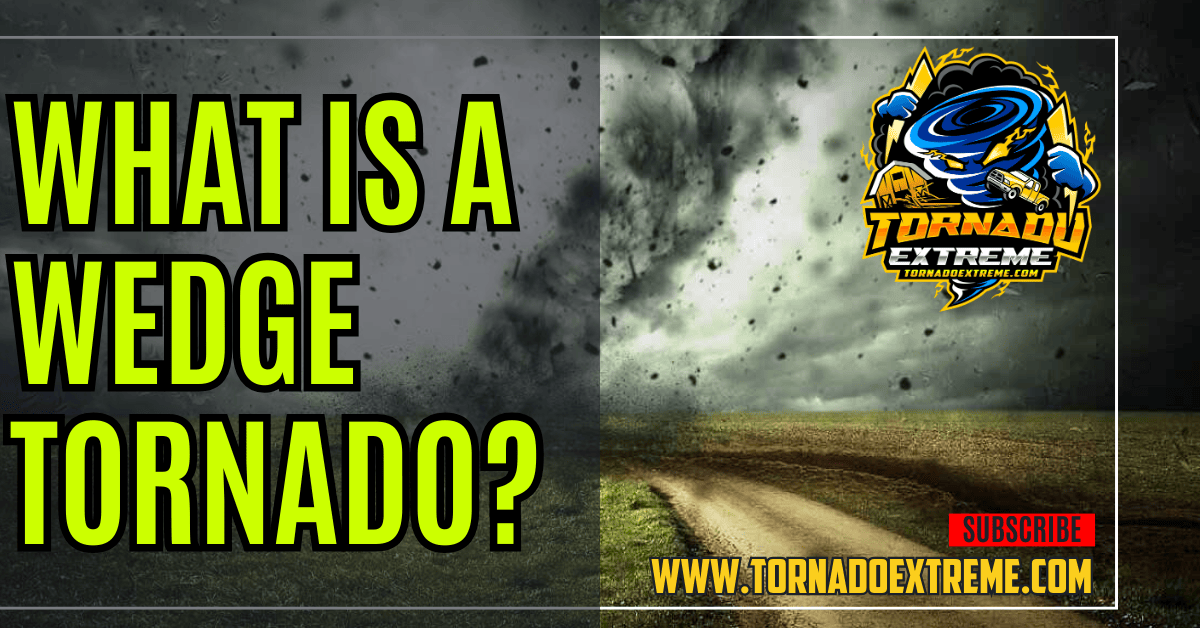Unveiling the Secrets of Wedge Tornadoes: The Mighty Force of Nature
Tornadoes, powerful and awe-inspiring forces of nature, have long captivated the human imagination with their sheer strength and destructive capabilities. In this comprehensive guide, we will delve into the mesmerizing world of wedge tornadoes, exploring their formation, anatomy, and the environmental conditions that give rise to these colossal natural phenomena. From understanding their classification to learning about safety precautions and forecasting techniques, this article aims to provide a thorough understanding of wedge tornadoes and their impact on the world around us.
Understanding Tornadoes and Their Classification
Understanding and Classifying Tornadoes is quite a complex task. First, there’s their classification by the National Weather Service by using either the Fujita Scale or Enhanced Fujita Scale. It puts them in categories extending from EF-0 to EF-5 according to their intensity.
These whirlwinds can measure differently depending on the different Altitudes, with width reaching at least as wide as the ground to cloud base distance. They come in various forms including low-hanging bleak clouds and fast spinning funnels. Some of these whirlwinds can appear as wedges that are wider than they are long.
There are a number of people who chase and observe storms — gathering data, providing warnings when one is imminent — but they’re also classified by factors other than intensity. The probability of producing debris? That’s one such factor. So is how warm the air surrounding it happens to be.
Building up towards more destructive forces, Wedge tornadoes are formed when its width is equal or greater than its height; Leveling buildings and destroying everything in its path. An increase in circulation and shear allow it to rapidly become an EF-4 or EF-5, with winds exceeding 200 mph. Multi-vortex tornadoes have several smaller vortexes rotating around a central one which then creates an intricate form of storm system that’s highly dangerous
Tornadoes are violent, rotating columns of air that extend from a thunderstorm to the ground, with the potential to cause significant damage in their path. These formidable whirlwinds come in various shapes and sizes, and they are classified based on their appearance and wind speed. One of the most intriguing classifications in severe weather phenomena is the wedge tornado, known for its massive size and destructive power. To comprehend Understanding Tornadoes And Their Types
When you think about it there’s really no other way to describe them as – a natural phenomenon that rotates at top speeds giving off great gusts of wind. Comprehending what makes up such an entity is confusing but not impossible! One thing you should note is that all tornadoes can be dangerous so if one forms near you then get outta dodge!
Each tornado has different variations which we’ll list down below for your reference:
1. Funnel Tornado
2. Cylinder/Stovepipe Tornado
3. Gustnado
4. Dust Devil
5. Fire Whirl

Types Of Wedge Tornadoes
The classic whirlwind shape that resembles an ice cream cone comes first on our list! It’s typically wide at both ends making it very recognizable.
Cylinder or Stovepipe Tornado:
These twisters are uniform tubes that have the same width all throughout its length. They are usually formed at the base of thunderstorms in the clouds.
Rope Tornado:
Thin, long, and grow upwards into more dangerous types of tornadoes. It may also dissipate fast due to changes in wind pressure.
Satellite Tornado:
What Are the Different Types of Tornadoes?
There are several different types of tornadoes, each with its own distinctive appearance and characteristics. Understanding these variations is important for predicting and tracking severe weather events, as it allows meteorologists to identify the type of tornado that is forming and predict its potential danger level.
1. Supercell Tornadoes:
Supercell thunderstorms are responsible for most of the violent tornadoes that occur in the United States. These storms have a rotating updraft known as a mesocyclone, which often produces long-lived tornadic activity.
2. Multi-Vortex Tornadoes:
Some supercell tornadoes contain smaller, sub-vortices embedded within them. These vortices orbit around the center of the larger tornado like a satellite would orbit around Earth.
3. Landspout Tornadoes:
Non-supercell landspouts can form from a rapidly growing cloud or weak thunderstorm when there’s just enough spin in the atmosphere near the ground.
4. Waterspout Tornadoes:
Waterspouts are simply tornadoes that form over water instead of land. They can develop during intense tropical systems like hurricanes or simple afternoon thunderstorms.
5. Non-Supercell Tornadoes:
These twisters do not originate from an organized storm rotation. They form due to air pressure differences in dry air and are often weaker than other types of tornadoes.
6. Wedge Tornadoes:
Wedge tornadoes are broad, tall, and massive. Although not an official meteorological term, many tornado spotters use it as slang.
What is a Wedge Tornado?
A wedge tornado has nothing to do with cutting wood or baking bread — although it is just as imposing as sliced bread falling on your foot!
The term “wedge” does not have an exact meaning in meteorology but rather describes how huge this monster looks to most observers. A wedge tornado is a large and dangerous twister that can stretch more than a mile wide (sometimes over 2 miles) while being taller than it is wide. If you’re standing at the base of the wall cloud looking straight up, you may only see a few hundred feet of sky before the cloud starts to curve back down.

How Do You Identify A Wedge Tornado?
The phrase “if it looks like a duck…” doesn’t apply here. Looking at a wedgie, it’s easy to identify one — run for cover! Most wedge tornadoes look like they’re about to bring hellfire upon your house as they growl across the landscape. However, not all large tornadoes are classified as wedges and not all wedges are particularly big; instead, this slang term describes their appearance rather than their size.
See also: What is a Waterspout Tornado?
Wedge Tornado Anatomy
Unlike many narrow rope-like or cone-shaped vortexes, these storms have an extended bottom half. Its wide base usually slopes out instead of having steep sides. The shape of the walls resembles a climbing ramp on the inside compared to most other twisters’ vertical rain curtains.
Formation
Most often associated with high-end supercell thunderstorms, meteorologists believe that typical long-lived wedge tornadoes develop in similar environments but quickly mature into violent twisters with powerful updrafts and downdrafts moving very rapidly around one another.
The formation of a wedge tornado depends on specific environmental conditions that must be present. Warm, moist air meets cold, dry air to create supercell thunderstorms, which are known birthplaces for wedge tornadoes. These air masses and other atmospheric forces rotate and can produce a rotating mesocyclone, which is the precursor to a wedge tornado. Figuring out how these giant whirlwinds come to life is essential in developing advanced warning systems that help minimize damage.
Powerful Wedge Tornadoes
Wedge tornadoes leave behind immense destruction and chaos. Their enormous size and forceful winds can level structures and uproot trees in seconds. The power they carry shape landscapes for years to come. Understanding just how devastating these tornadoes are should encourage communities to better prepare for them and help reduce the impact on life and property.
Destruction from Wedge Tornadoes
In April 2020, A wedge tore through San Jacinto and Polk County in Texas killing three people, injuring 33 others, and causing $5 million worth of damages. Homes were destroyed, roofs were ripped off leaving families exposed to the elements, trees crashed through walls – it was catastrophic.April 2019 saw an EF-3 wedge that killed two people in Blue, OK injuring nine others. May 2019 brought an EF4 down upon Lawrence and Linwood in Kansas leading to 18 injuries. Taylorville in Illinois had a brush with its own EF-3 wedge in November 2018 causing injuries but zero fatalities. And finally April-May 2017 witnessed an EF4 wreak havoc near Eustace in Texas killing two people.
Preparedness is crucial when you live under the constant threat of deadly storms like these.
See also: What is a Waterspout Tornado?
How Are Wedge Tornadoes Ranked?
I’ve gone over the impact that these terrifyingly large twisters can have before. But many are also curious about what classifies them on the Enhanced Fujita wind speed scale (EF Scale).
The EF scale was implemented in February 2007, and the ratings are determined by considering both the wind speeds and potential damage caused by them. Here’s a breakdown of what each rating means on the scale:
– EF0: 65-85 mph winds with light damage
– EF5: Over 200 mph winds with incredible damage
Wedge tornadoes, being among the largest of all tornadoes, would likely fall into one of the higher numbers on this scale due to their size and intense winds. It is important to be prepared before these disasters strike.
It’s necessary for communities in tornado-prone areas to have emergency plans and to be aware of weather alerts.
The actual power of a tornado can change depending on several different factors, so the EF scale doesn’t tell the full story. By staying informed through latest weather clips and prepared, individuals and communities can minimize the potential devastation caused by wedge tornadoes.
Notable Wedge Tornado Events
There are numerous storms that have affected many people who live in the areas they passed. For instance, there was this thing called the Tri-State Tornado of 1925. They say it destroyed pretty much everything along its path which is actually known to be the longest ever.
But some events like the El Reno tornado of 2013 were more recent, however, just as disheartening. No matter how you look at it, these kinds of things remind us all how powerful chaotic weather can truly be. They’ve also been used by researchers and emergency management agencies for learning purposes. Like how do these bad boys act once they hit ground level?
We’d be absolutely insane to forget about Hurricane Katrina, one of the most well-known storms in the past few decades. It hit the Gulf Coast back in ’05 and demolished everything in sight. This disaster resulted in over 1,800 deaths and lots of destruction before eventually fading away. And don’t even get me started on Superstorm Sandy from 2012…
This storm struck the East Coast and caused havoc. The flooding alone suffocated communities’ ability to function properly and power outages ran rampant throughout their neighborhoods. All said and done though, this storm cost billions worth of damages — that’s right… billions!
Each one of these monsters that Mother Nature spits out acts as a reminder to everyone about her true force and unpredictability. They also stress just how essential it is to be prepared for when they come knocking on your front door one day. But not only preparedness… communities must learn how to mitigate damages once those doors are knocked down too if they want any chance at surviving each storm’s wrath!
Safety Precautions During Wedge Tornadoes
When faced with something as dangerous as a wedge tornado it’s important to take preventative measures that will keep you safe until it passes over your area or moves away from you completely. Establishing designated storm shelters, developing comprehensive emergency plans, and staying informed through reliable weather alerts are crucial steps in safeguarding against the destructive force of wedge tornadoes. By educating the public on effective safety measures and fostering a culture of preparedness, the impact of these natural disasters can be minimized, ultimately saving lives and reducing the toll on infrastructure.

Forecasting and Detection Techniques
Forecasting and detection methods are crucial in predicting and understanding severe weather patterns such as tornadoes. Storm chasers and observers, particularly those that use specialized technology like the Dominator 3 vehicle from Fox Weather that can withstand extreme conditions, often work to track and analyze storms in states like Oklahoma which experience them more frequently.
Tornadoes can take on many forms but a “true wedge” tornado is one where its width exceeds the distance it spans between the ground and clouds above. A storm’s status depends on various other factors aside from how powerful it is. If you notice dark skies or a funnel-shaped cloud that touches down onto the ground while being violently whipped around by wind, these are preliminary indicators that a photogenic tornado has formed or will form soon. The National Weather Service (NWS) issues official notifications but ones from storm chasers also help inform people in surrounding areas, giving them sufficient time to prepare for the incoming disaster.
Over time we’ve learned some pretty cool things about how to see when a tornado is coming before it actually does any major damage to populated areas. Doppler radar systems have been extremely useful when it comes to detecting rotation within severe thunderstorms which has led us to creating warning systems for people living in areas where they are known to hit.
There are even unmanned aerial vehicles that experts use to monitor storm systems in real-time. With the help of these amazing tools, meteorologists and emergency management agencies have been able to do a great job at providing timely and accurate information to people who need it most before things get too out of hand.

Research and Studies on Wedge Tornadoes
Wedges are the destructive, dangerous breed of tornado. They can extend half a mile in width and reach 30 miles high. The further they stretch from the ground, the bigger the risk becomes, as debris is sent flying higher before it smashes back down.
The wedge’s status–whether or not its active at all–depends on wind speed, location and how long it lasts. Scientists have their eyes on these monsters so they can develop better early warning systems. Severity is a big part in figuring out just how bad one of these tornados will be, but there are other factors that can make them even more damaging than what they initially seem to be.
There is still so much we have yet to learn about wedge tornadoes. But researchers and scientists all over the world are doing their best to uncover whatever secrets this natural phenomenon holds. Their main goal is deepen its understanding of the atmospheric dynamics that give rise to wedge tornadoes and the factors that influence their behavior. This way we can be better prepared whenever one does show up on our radars.
To wrap things up, the globe of severe weather—wedge tornadoes especially—is a mesmerizing domain which encompasses nature’s jaw-dropping strength and its enormous impact on our planet. By studying the creation, anatomy, and environmental factors that birth these massive whirlwinds, we gain valuable knowledge into their behaviors and the precautions that can be taken to protect against their destructive power.
With continuous research, technological leaps, and unwavering efforts to keep people safe, we hope to uncover the mysteries of wedge tornadoes sooner than later—reducing all harm caused in the process.
See also: What Is a Multi Vortex Tornado? A Comprehensive Exploration

